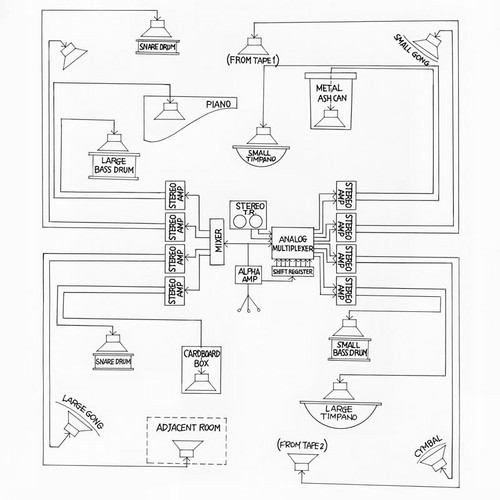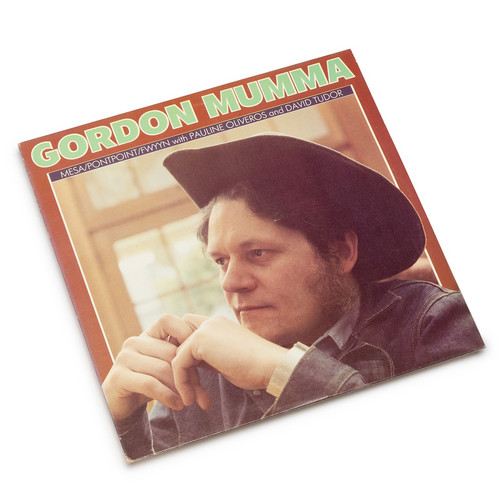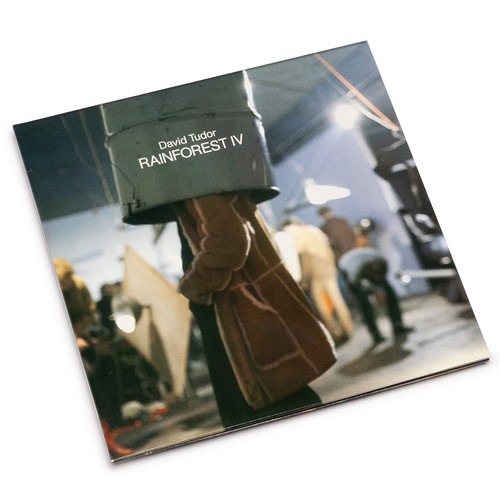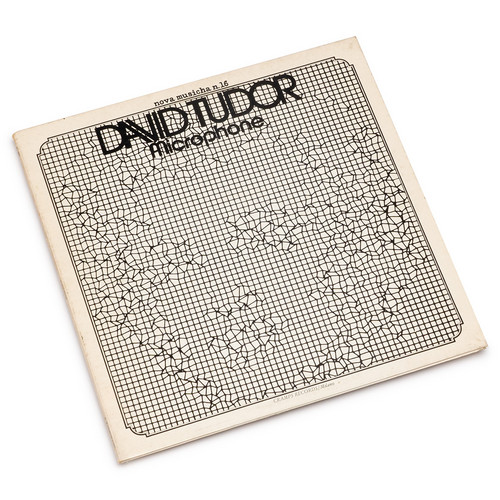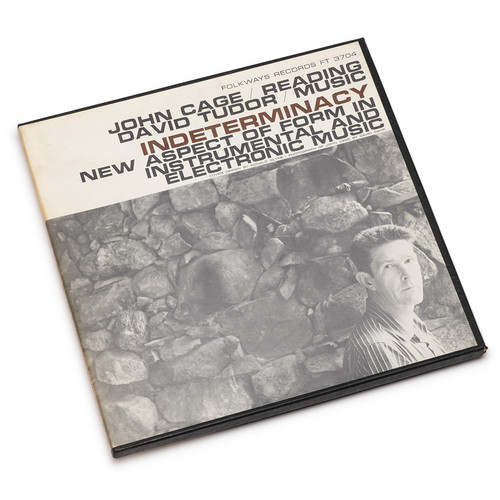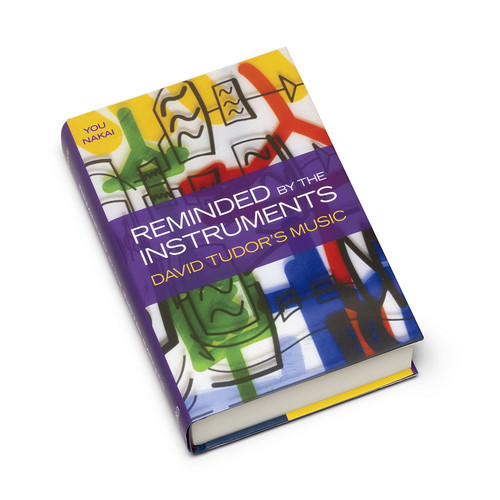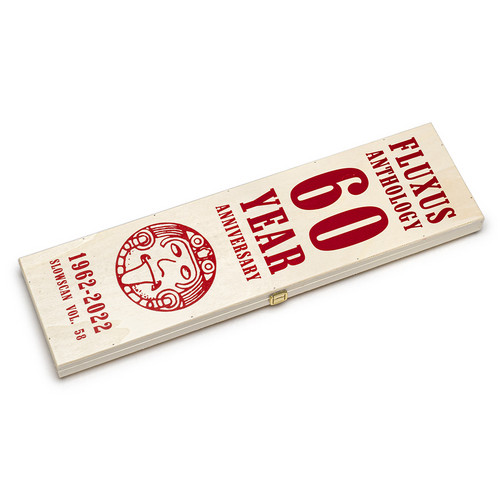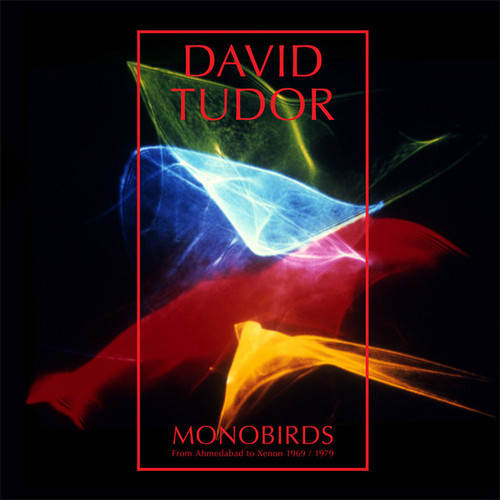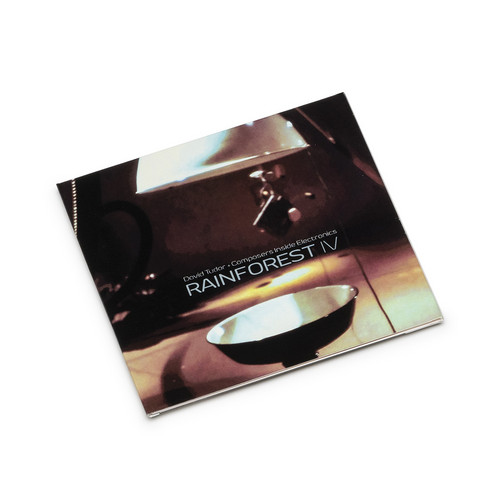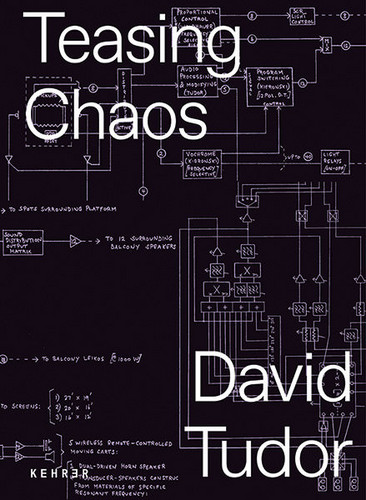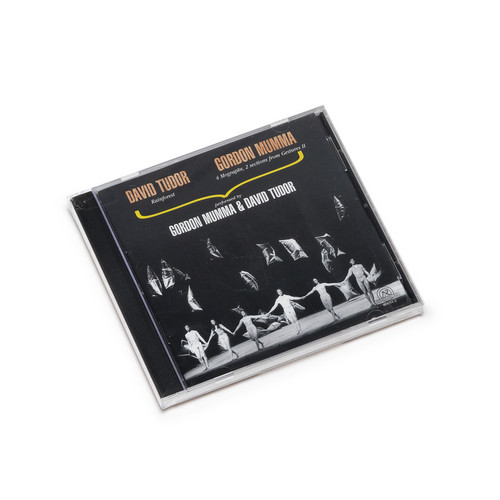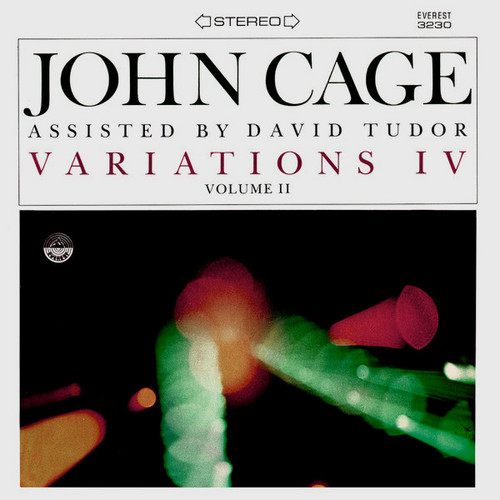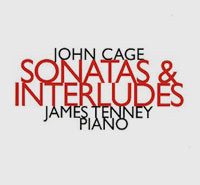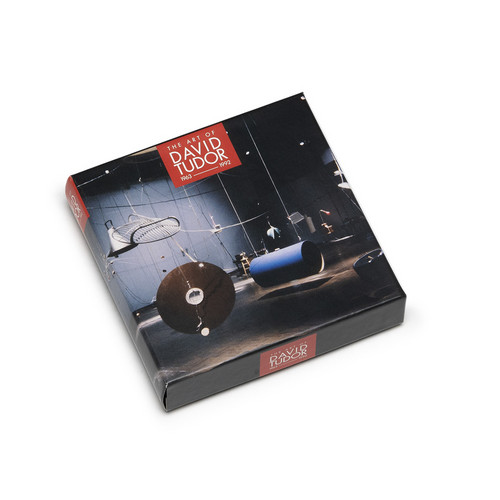David Tudor
In the world of American experimental music, David Tuor (1926-1996) was something of a legend. For a number of years following the Second World War, he was the only performer to devote himself systematically to this music. In doing so, Tudor became a touchstone for some of the most radical musical activity of the 20th century.
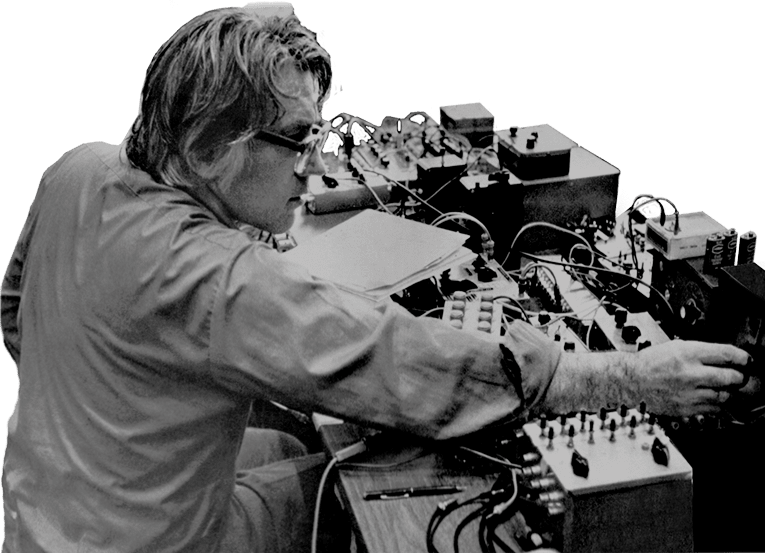
In the world of American experimental music, David Tuor (1926-1996) was something of a legend. For a number of years following the Second World War, he was the only performer to devote himself systematically to this music. In doing so, Tudor became a touchstone for some of the most radical musical activity of the 20th century.
Appearance/Music for Solo Performer
Big tip! Beyond Rare! These historical recordings of a 1967 concert at Hope College in Michigan involving John Cage, Toshi Ichiyanagi and David Tudor, performing compositions by Ichiyanagi and Alvin Lucier, were recently discovered in an archive in Japan. The Lucier piece, "Music for Solo Performer", was the first musical composition to utilize human brainwaves; this 1967 performance, released here for the first time, is an early realization of the piece, featuring Tudor, Ichiyanagi and Lowell C…
Mesa / Pontpoint / Fwyyn
Original 1986 edition on Lovely of music for bandoneaon and cybersonic console by Mumma featuring David Tudor and Pauline Oliveros. Only the best of the best!
Rainforest IV (LP)
Original 1981 mint copies of the first edition of Tudor's electronic environment masterpiece from 1973 published by the legendary Edition Block.
Microphone
Original copy in excellent condition with innersleeve of one of the most beloved and sought-after albums released by Cramps on their landmark Nova Musicha series, Tudor's 1978 stunning and extreme electronic piece just as thrilling and ahead of its time today as it was then.
Indeterminacy: New Aspect Of Form In Instrumental And Electronic
Perfect copy of Cage & Tudor's landmark album for Folkways from 1959 released as 2xLP box set with booklet.
Reminded by the Instruments. David Tudor's Music (Book)
** 768 Pages | Over 300 illustrations ** David Tudor is remembered today in two guises: as an extraordinary pianist of post-war avant-garde music who worked closely with composers like John Cage and Karlheinz Stockhausen and as a founding figure of live-electronic music. His early realization of indeterminate graphic scores and his later performances using homemade modular instruments both inspired a whole generation of musicians. But his reticence, his unorthodox approaches, and the diversity …
Fluxus Anthology 60 Years Anniversary, 1962-2022
** Last copies ** In (heavy and over-sized) wooden box of 80 copies, hand numbered. Ten audiotapes with interviews/statements, tape collages, electronic music, interview, live events with new and some old material. By Charlotte Moorman, David Tudor, Fernad Kriwet, Joe Jones, Robert Filliou, Carolee Schneemann, Allan Kaprow, Richard Maxfield, Emmett Williams, and many more.
What is Fluxus? Fluxus was launched in 1962 as an interdisciplinary, neo-avant-garde artist collective, whose organized act…
Variations VII - 9 Evenings: Theatre & Engineering
Lucky restock, last copies In late 1965, Billy Klüver, a research engineer at Bell Telephone Laboratories, arranged for ten New York artists -- John Cage, Lucinda Childs, Öyvind Fahlström, Alex Hay, Deborah Hay, Steve Paxton, Yvonne Rainer, Robert Rauschenberg, David Tudor and Robert Whitman -- to meet with a group of his fellow engineers and scientists from Bell Laboratories to work together to develop technical equipment to be used as an integral part of the artists’ performances. 9 Evenings: …
Monobirds
From the Danish imprint Topos, comes one of the most historically important archival releases of the year, a never before issued work - "Monobirds (From Ahmedabad to Xenon)" created by David Tudor between 1969 and 1979. A truly visionary expanse of pure electronic abstraction, stretching across a beautiful double LP accompanied by a 24-page large booklet, its thrilling sounds encounter one of the 20th Century's most important musical minds at the height of his powers, and radically expands our a…
Rainforest IV
** Six panel wallet with one CD. Binaural audio best heard with headphones ** Few artists within the canons of 20th Century avant-garde and experimental music can be regarded as important or influential as the pianist and composer David Tudor. His name rings out across the years. Yet, despite Tudor’s place in history, his legacy largely remains under the shadow of the artists that he worked with, most notably John Cage, while the majority of his own output as a composer - a handful of releases p…
Teasing Chaos (Book)
Restock due soon * 224 pages 110 color and b/w illustrations * David Tudor (1926–1996) was one of the leading pianists and interpreters of contemporary music in Europe and the USA in the 1950s. His ability to respond to the indeterminate character of demanding scores by composers such as John Cage, Karlheinz Stockhausen, and Christian Wolff and to execute their at times ambiguous instructions was unique and fascinated his contemporaries. In the early 1960s, he made the transition from interprete…
Music of David Tudor and Gordon Mumma
This historic recording features the first-ever release of the two earliest surviving recordings of David Tudor's seminal work, Rainforest. Sandwiched in between are six keyboard works by Gordon Mumma in recordings featuring the composer and his close collaborator, Tudor. Together, these works constitute a fascinating and historically important document of the 1960s avant-garde in America.
In early 1968, Merce Cunningham created a new dance whose apparent impetus was Colin Turnbull's The Forest …
Variations IV, Vol. II
A 1965 journey into found sound; this is John Cage. Another seminal volume of indeterminate music, from an icon of experimental sounds. Reissued for the first time and thematically on gorgeous clear vinyl! It could be argued that there is no more controversial figure in music history as avant-garde electronic composer John Cage. Perhaps best known for his composition “4'33"" which consisted of Cage sitting at a piano for four-plus minutes of total silence, Cage was both loved and loathed …
Variations IV, Vol. I
"Due to unprecedented demand" for the first volume of Everest's 1965 release of John Cage's Variations IV (perhaps unique at the time given the experimental nature of the material), a second selection of music culled from Cage and associate David Tudor's marathon six-hour concert at the Feigen-Palmer Gallery in Los Angeles was released. Whereas the first volume indicated roughly at what moment of the performance the recordings were sourced from (its four extracts document events taking place in …
San Francisco Museum Of Art, January 16th, 1965
Recorded live by KPFA Radio in the halls of the sculpture court of the San Francisco Museum of Art on January 16, 1965, the day of 39th birthday of fellow pianist and longtime associate David Tudor, this historic concert with John Cage opens with a duet for Cymbal with contact microphones agitated by a wide gamut of objects and concludes with Variations IV in which loudspeakers outside the performance space interacted with speakers next to the audience. First release on vinyl for a very importan…
Variations IV
Anything can happen and often does. This is John Cage. A seminal example of indeterminate music from an icon on experimental sounds. This work was originally used as music for the choreographed piece by Merce Cunningham, "Field Dances," with stage and costume design in the original version by Robert Rauschenberg (from 1967 the designer was Remy Charlip). Variations IV is the second work in a group of three of which Atlas Eclipticalis is the first (representing 'nirvana', according to Hidekaz…
Music from the Tudorfest: San Francisco Tape Music Center, 1964
In the spring of 1964 Pauline Oliveros organized a festival celebrating the work of pianist David Tudor, which featured compositions by Oliveros, George Brecht, Toshi Ichiyanagi, Alvin Lucier, and John Cage. The Tudorfest was a watershed event in the brief history of the San Francisco Tape Music Center, which not only provided its members with an opportunity to collaborate with Tudor, but also to promote their own work. Co-sponsored by KPFA, the Tudorfest demonstrated the artistic diversi…
Music Of Changes
The title is a double pun. The score is the first that John Cage devised allowing the hexagrams of the I Ching to fully determin e how the music would procee d, event by event, gesture by gesture—the musical details (pitch, duration, dynamic s, density, tempi) being painstakingly, albeit fortuitously, derived through point-by-point con sultation from charts of possi bilities designed by the composer. (Christian Wolff, Cage’s young friend and musical associate, had presented Cage with a co…
The Art Of David Tudor 1963-1992
Milestone release! David Tudor's (1926-1996) identity morphed seamlessly from interpreter of mainly acoustic music to composer-performer of predominately electronic music over a period of about ten years, from the mid-1950s to the mid-1960s. This set of seven CDs, the first truly comprehensive survey of Tudor's work as a composer, goes beyond any previous attempt to document that process of transformation. It captures his touch and sensitivity and offers an expansive, previously unavailable view…
John Cage Shock Vol. 2
Volume 2 in EM Records' John Cage Shock series lifts off with a fiery example of David Tudor's piano virtuosity, his mastery of dynamics well-evident in a performance of Klavierstücke X (1961) by Karlheinz Stockhausen. The titular shock of this series is delivered even more forcefully with the next piece, John Cage's 26'55.988" for 2 Pianists and a String Player (1961), which was first performed the year before in Darmstadt by Tudor and Kenji Kobayashi, a combination of two of Cage's solo piece…
